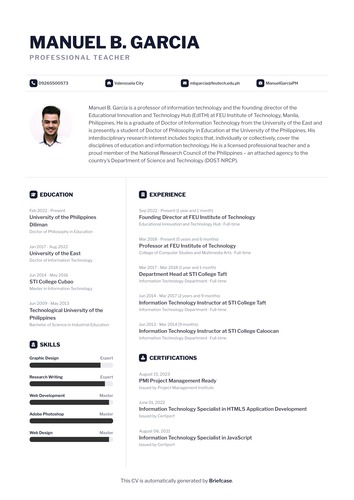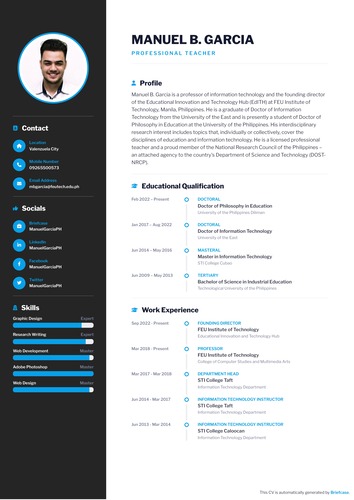Are you ready to introduce yourself?
Show the world what you're made of 💪
Effortlessly showcase your accomplishments because being awesome 😎 deserves a spotlight.
Create
Effortlessly build an online portfolio to showcase your accomplishments.
Share
Share your online portfolio and broadcast your successes to the world.
Connect
Expand your professional circle and forge meaningful relationships.
Building Your Career, One CV at a Time
Create Your Professional CV
Say goodbye to the hassle of manual formatting and updates, and start elevating your professional journey with Briefcase's automatic CV generator.
Seamlessly convert your achievements, skills, and experiences into a polished document suitable for job applications, interviews, and networking.


Streamlined Process
Save time and effort by automatically converting your online portfolio content into a well-structured CV.
Professional Formatting
Your CV will maintain a professional look and feel, ensuring you make a strong impression on potential employers.
Versatile Usage
Use your CV for job applications, networking, or any situation where you need to showcase your qualifications.
Always Up-to-Date
Your CV stays current with your latest achievements as you update your portfolio, eliminating the need for manual updates.
Spotlight on Briefcase Users
Here are a few of the incredible tamaraws who have embraced our platform to showcase their skills and accomplishments.
Joenar S. Dela Cruz
BMA student at FEU Institute of Technology
Jan William N. Coscolluela
BS Information Technology major in Service Management and Business Analytics
Anton Louis L. Carreon
BSCpE student at FEU Institute of Technology
Maryjoy Ann F. Buban
BMA student at FEU Institute of Technology
Mark Lorenz G. Cotorno
IT PROFESSION
John Daniel M. Gatdula
Bachelor in Multi Media Arts
Markcel F. Talisic
Your Freshie Explorer
Trisha R. Laynesa
Aspiring Software Developer: Proficient in Coding Languages and Quick Learner
Frequently Asked Questions
Ready to show the world?
Join the movement of tamaraws who showcase their accomplishments and show the world what they're made of.
Get started — it’s freeJoin 18732 tamaraws today and start showcasing.

